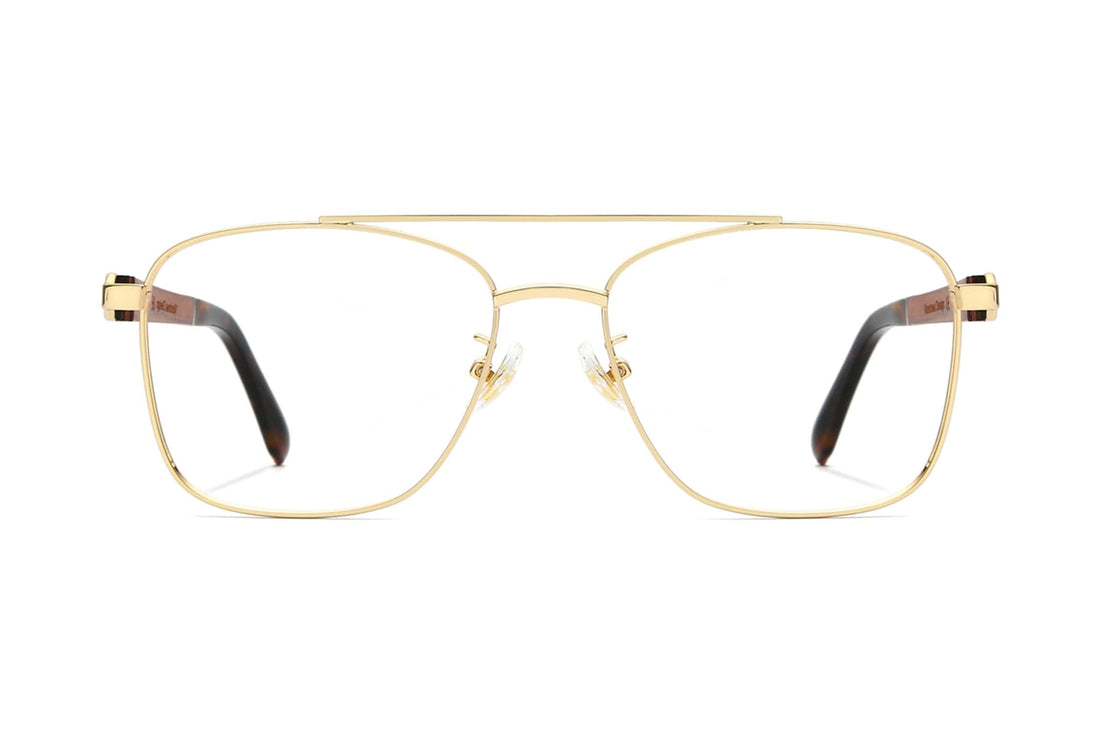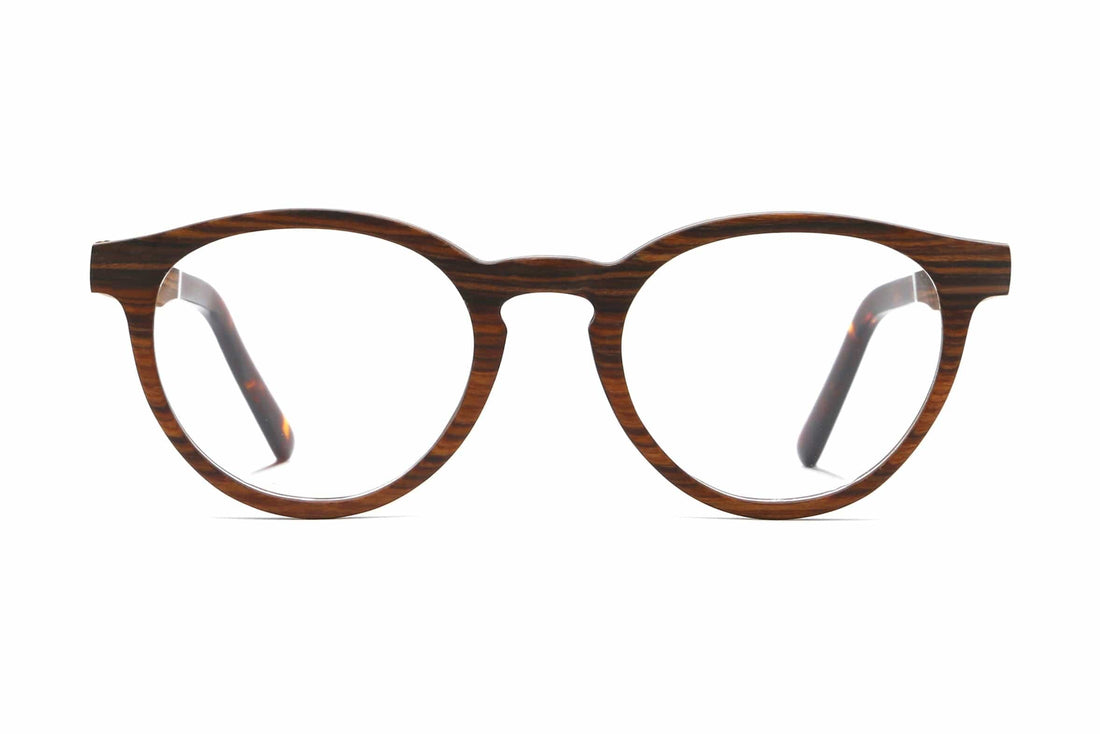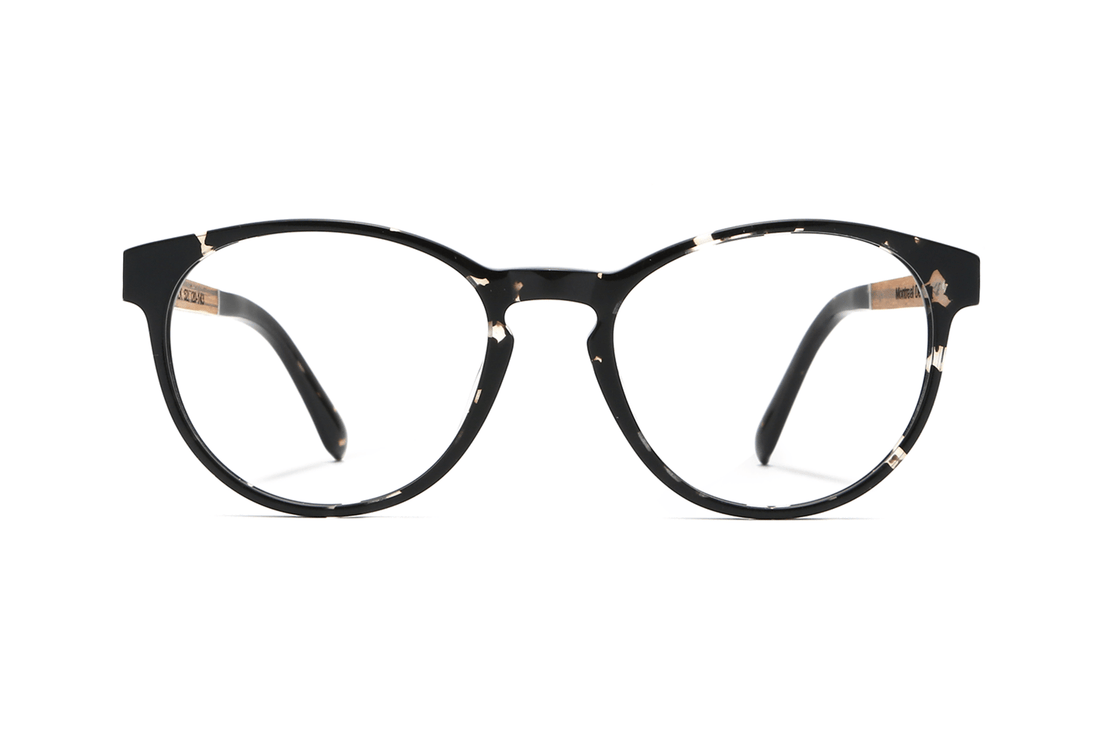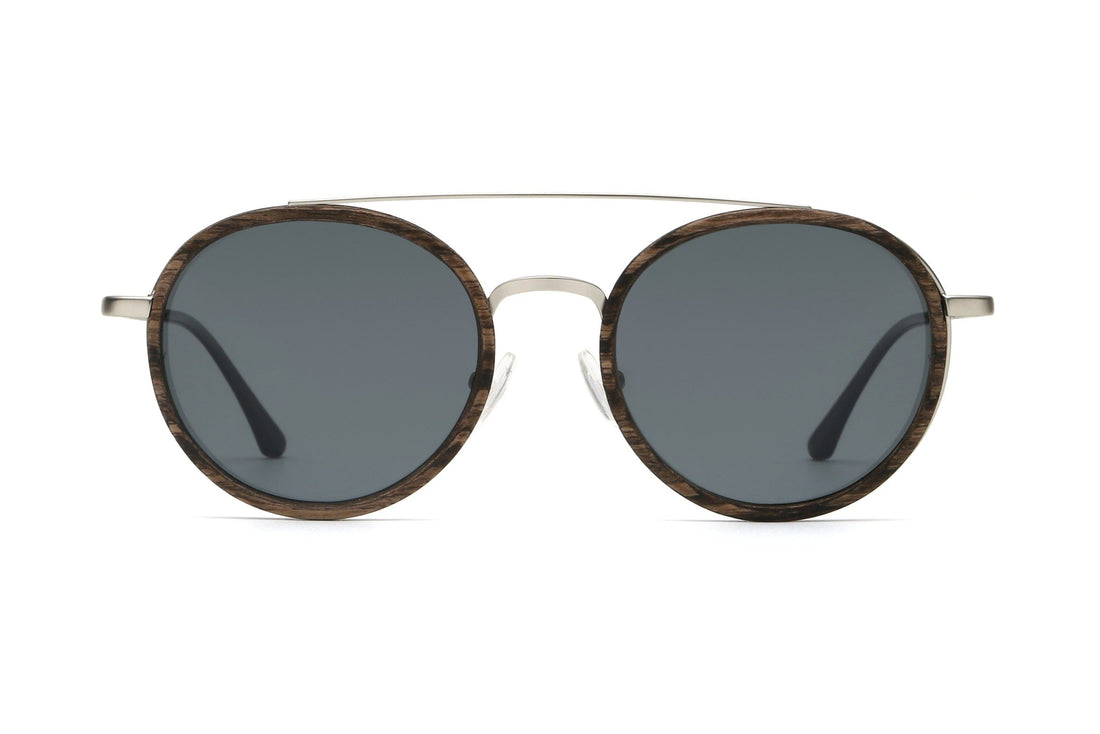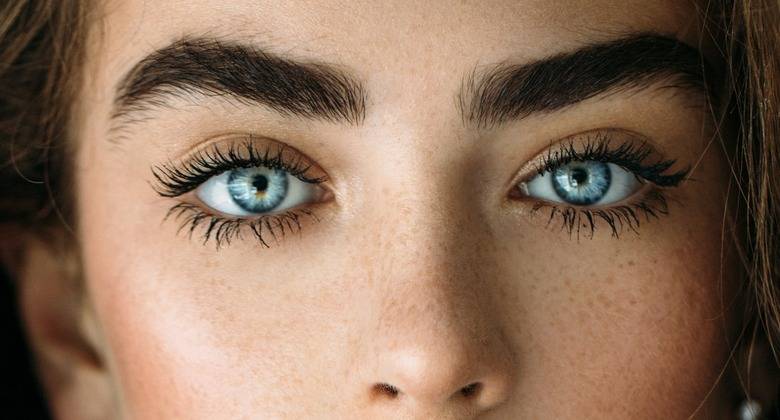
Top Blue Eyes Facts You Need To Know
Top Blue Eyes Facts
7 min read • Posted on 7 March 2024
Blue eyes have captivated and fascinated people for centuries, often associated with mystery, beauty, and allure. But there’s more to blue eyes than their striking appearance. Behind their enchanting hue lies a world of fascinating facts and scientific discoveries. In this article, we’ll explore the genetic origins, evolutionary significance, and cultural perceptions that make blue eyes so intriguing.
Trending Glasses
Top 10 facts about blue eyes
Let's delve into a more detailed and in-depth explanation of the ten fascinating facts about blue eyes:
Genetic Mutation
Blue eyes result from a genetic mutation affecting the OCA2 gene, which controls melanin production, the pigment that determines a child's eye skin and hair color. Specifically, individuals with blue eyes have a genetic variation that leads to reduced melanin production in the iris, resulting in a distinctive blue hue.
Global Rarity
Blue eyes may seem familiar in certain regions but are relatively rare worldwide. Only about 17% of the global population possesses blue eyes. This rarity adds to their allure and fascination.
Northern European Origin
Blue eyes are most generally found in inhabitants of Northern European descent, including those from Scandinavian, Baltic, and Celtic backgrounds. The prevalence of brown eyes can be attributed to historical migrations and genetic isolation within these populations.
Ancient Origins
The mutation for blue eyes is believed to have originated around 10,000 years ago in the Black Sea region. As human populations migrated and intermixed, this genetic trait spread across Europe and other parts of the world.
Eye Color Perception
Contrary to popular belief, blue eyes do not contain blue pigment. Instead, the blue coloration results from light scattering and reflecting off the collagen fibers in the iris stroma. The unique structure of melanin in the iris causes shorter and longer wavelengths of light to be scattered, giving rise to the perception of blue eyes.
Health Considerations - Blue light intolerance
While blue eyes are often admired for their beauty, they may also be associated with specific health considerations. Due to their lower levels of melanin, blue-eyed individuals may be at a higher risk of eye conditions such as skin cancer and eye cancer, such as macular degeneration and uveal melanoma, which are linked to sun exposure, blue light, and UV radiation.
Cultural Significance
Blue eyes have historically held cultural and symbolic significance in various societies. In ancient civilizations like Greece and Rome, blue eyes were associated with beauty, divinity, and even supernatural powers. Art and literature from these periods often depicted revered figures with blue eyes.
Pop Culture Icons
Blue eyes continue to be celebrated in popular culture, with countless iconic figures possessing this distinctive trait. From Hollywood stars to fictional characters in literature and film, blue eyes are often portrayed as a symbol of attractiveness, allure, and even mystery. The most notable celebrity is blue-eyed Prince William, married to green-eyed Kate Middleton.
Genetic Inheritance
Blue eyes are considered a recessive trait, meaning both blue-eyed and brown-eyed parents must have the gene for blue eyes for their child to inherit them. However, due to the complexity of genetic inheritance, blue eyes can still manifest in individuals without blue parents' eyes through the expression of recessive genes from previous generations.
Diverse Perceptions
Societal attitudes towards blue eyes have evolved. While they were once highly prized and associated with certain ideals of beauty, modern society embraces diversity and celebrates unique features, including eye color. Blue-eyed individuals are appreciated for their individuality rather than conforming to rigid beauty standards.
These straightforward illustrations thoroughly understand the genetic, cultural, and perceptual aspects surrounding blue eyes, shedding light on their complexity and significance in the same spot in human history and biology.
Top 7 bizarre, obscure, and strange facts about blue eyes
Here are five bizarre, obscure, and strange facts about blue eyes:
Heterochromia Iridum:
Heterochromia iridium is a rare condition where an individual has two different colored eyes. While it's more commonly associated with one blue eye and the other a brown eye, it can also manifest as variations of blue in both a baby's eyes. This unique phenomenon adds an element of intrigue and mystique to individuals with blue eyes and brown pigment (pigment epithelium).
Blue Eye Variations:
Blue eyes display shades and variations, from icy pale blue to deep sapphire hues. Some individuals may have blue eyes with hints of other colors, such as green light brown pigment or gray, creating a mesmerizing and unique appearance to darker eyes.
Alexandria's Genesis:
Alexandria's Genesis, also known as violet or purple eyes syndrome, is a fictional and widely debunked genetic mutation rumored to result in individuals being born with violet or purple eyes, perfect vision, and no body hair except for the eyebrows, eyelashes, and head hair. Despite being a myth, it has gained attention in online communities and urban legends, contributing to the fascination surrounding eye color.
Blue Eyes and Alcohol Tolerance:
Some studies suggest a potential correlation between eye color and alcohol tolerance, with individuals with lighter eye colors, including blue, possibly having a higher alcohol tolerance compared to those with darker eye colors. However, the scientific validity of this claim remains uncertain and requires further research.
Blue Eyes and Night Vision:
Contrary to popular belief, individuals with blue eyes may have slightly poorer night vision than those with darker eye colors. This is because blue light reflects lighter, scattered light-colored irises contain less melanin, which affects the eye's ability to dilate and adjust to low-light conditions, potentially impacting night vision.
These bizarre facts highlight the intricacies and peculiarities surrounding blue eyes, adding to their enigmatic appeal and sparking curiosity about the science and myths behind eye color.
The most common characteristics of people with blue eyes
People with blue eyes share several common characteristics, both physical and psychological, that are often associated with this distinctive eye color. Some of the most common factors include:
Fair Skin:
Blue-eyed individuals commonly have fair skin tones, ranging from porcelain to light olive complexion. This is because the genetic mutation responsible for blue eyes tends to be more prevalent in populations with lighter skin tones.
Light Hair:
Blue eyes are frequently paired with light-colored hair like blonde or light brown. This combination results from similar genetic factors influencing eye and hair color and deficient melanin levels.
Sun Sensitivity:
Due to their reduced melanin levels, blue-eyed individuals may be more sensitive to sunlight and prone to sunburns. They often require extra protection, such as sunscreen and sunglasses, to shield their eyes and skin from UV radiation.
Eye Color Variations:
Blue eyes are commonly associated with a clear, pale blue hue but can exhibit shade and intensity variations. Some blue-eyed individuals may have hints of green, gray, or even flecks of gold in their irises, adding depth and complexity to their eye color.
Personality Traits:
While no scientific evidence links a baby's eye color to personality traits, some cultural stereotypes suggest that blue-eyed people possess specific characteristics. These stereotypes often include intelligence, creativity, and sensitivity, though it's essential to recognize that many factors beyond eye color influence personality.
Perceived Attractiveness:
Blue eyes are often considered attractive and captivating, both culturally and aesthetically. Studies have shown that others may perceive more blue-light-eyed individuals as more attractive, contributing to their popularity and desirability in specific social contexts.
Mystery and Intrigue:
Blue eyes are sometimes associated with a sense of mystery and intrigue due to their relatively rare occurrence and the captivating color effect of their blue color alone. This perception can contribute to the allure and fascination surrounding blue-eyed individuals.
While these characteristics may be commonly observed in people with blue, green, or hazel eyes, it's essential to remember that individual differences and diversity exist within every population. Eye color is just one element of a person's build and originality, and it does not determine their personality, abilities, or worth.
What are the best eyeglasses and sunglasses that match blue-eyed people perfectly?
Choosing eyeglasses and sunglasses that complement blue eyes can improve their natural attractiveness and make them stand out. Here are some recommendations for the best styles and colors to match blue eyes perfectly:
-
Warm Metallic Frames: Gold, copper, or bronze metal glasses frames can complement blue eyes beautifully. The warm tones of these metals contrast nicely with the coolness of blue eyes, creating a striking and harmonious look.
-
Tortoiseshell Frames: Tortoiseshell glasses frames, with their mix of warm browns, ambers, and hints of gold, can bring out the flecks of gold or green often present in blue eyes. The rich tones of tortoiseshell add depth and dimension to the eye color.
-
Light Neutral Frames: Light neutral frames in shades like beige, ivory, or champagne can provide a soft and subtle contrast to blue eyes. These colors help highlight the coolness of the eye color without overpowering it, creating an understated and elegant look.
-
Classic Black Frames: Black frames are a versatile choice that complements all eye colors, including blue. The bold contrast of black against blue eyes can draw attention to their vivid color and create a striking visual impact.
Ultimately, the best glasses for blue eyes make you feel confident and comfortable. Experiment with different styles, colors, and frames to find the perfect match, highlighting your unique eye color and personal style.
Conclusion
Blue eyes are a testament to the intricate tapestry of human genetics, history, and culture. From their elusive origins to their symbolic significance, blue eyes continue to captivate and inspire awe. As we unravel the mysteries surrounding blue and brown eyes, we sincerely appreciate the rich tapestry of human diversity.
 Heba Ahmed
Heba Ahmed









